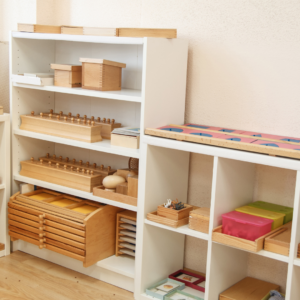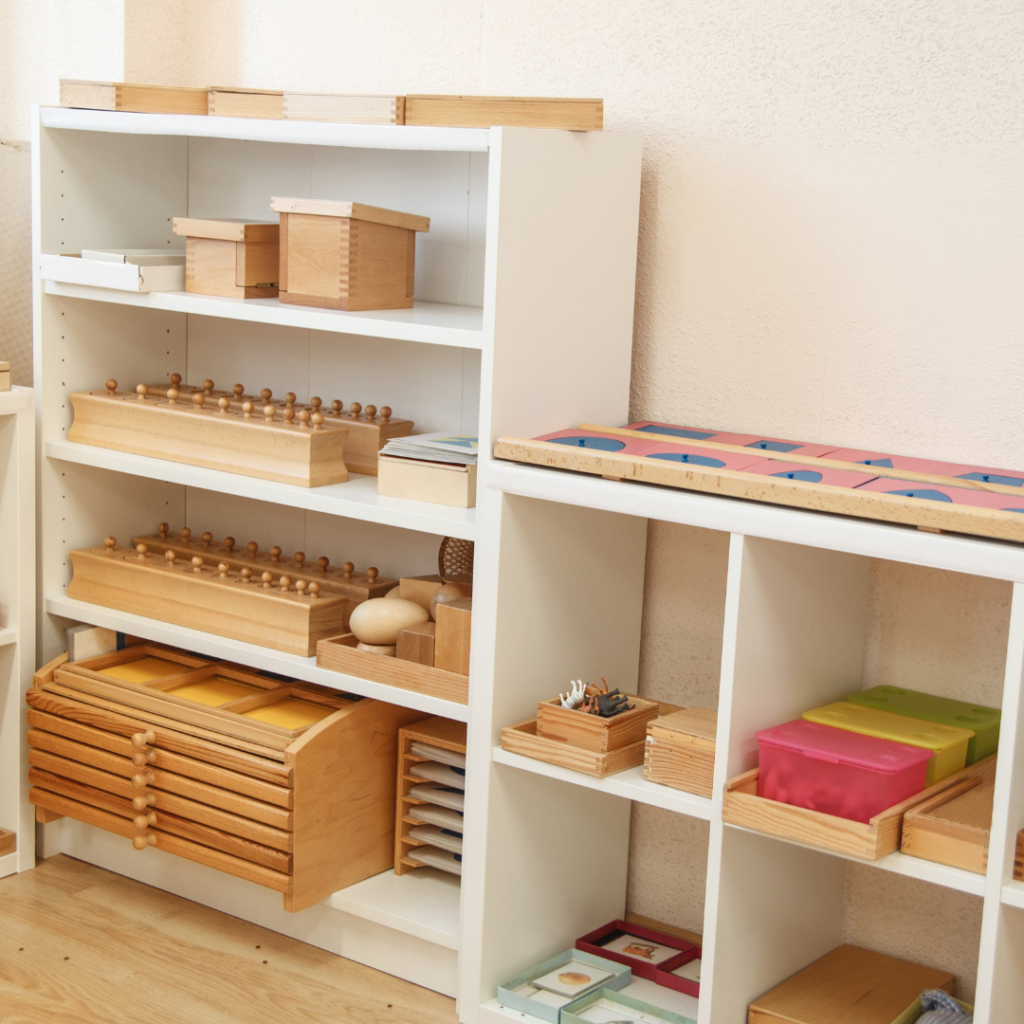Why We Use Natural Colors in Our Classrooms:
At our child care center, we follow the Montessori method, which emphasizes creating a calm, thoughtfully prepared environment that encourages independent learning, exploration, and emotional development. As part of this approach, we carefully choose natural colors for our classrooms, using soft tones like greens, blues, browns, and other earthy hues rather than the bright, primary colors often seen in many traditional preschool settings.
creating a calm, thoughtfully prepared environment that encourages independent learning, exploration, and emotional development. As part of this approach, we carefully choose natural colors for our classrooms, using soft tones like greens, blues, browns, and other earthy hues rather than the bright, primary colors often seen in many traditional preschool settings.
 creating a calm, thoughtfully prepared environment that encourages independent learning, exploration, and emotional development. As part of this approach, we carefully choose natural colors for our classrooms, using soft tones like greens, blues, browns, and other earthy hues rather than the bright, primary colors often seen in many traditional preschool settings.
creating a calm, thoughtfully prepared environment that encourages independent learning, exploration, and emotional development. As part of this approach, we carefully choose natural colors for our classrooms, using soft tones like greens, blues, browns, and other earthy hues rather than the bright, primary colors often seen in many traditional preschool settings.How Natural Colors Support the Montessori Approach:
-
Creating a Calm and Focused Environment: The Montessori philosophy stresses the importance of a peaceful, distraction-free environment to support concentration and independent learning. Bright, bold colors can be visually overwhelming and tend to overstimulate children, making it harder for them to focus on tasks. Natural colors, in contrast, create a calming atmosphere that helps children feel grounded and centered, allowing them to focus more effectively on their work.
-
Supporting Independent Exploration: In a Montessori classroom, children are encouraged to explore at their own pace, engage with materials, and make choices about their learning. A space filled with natural colors fosters a sense of tranquility that supports this self-directed exploration. By creating a less distracting environment, natural colors help children feel more comfortable in their autonomy, allowing them to approach learning with curiosity and confidence.
-
Encouraging Emotional Balance: The Montessori approach also places a strong emphasis on emotional development and self-regulation. Natural colors like soft greens and blues are known to have a soothing effect on the nervous system, which helps children manage their emotions and behavior. These colors can create a sense of harmony in the classroom, helping children feel more at ease and better able to engage with the world around them.
-
Fostering a Connection to Nature: Montessori education values the connection between children and the natural world, believing that children learn best when they feel connected to nature. Using natural tones in the classroom not only reflects this philosophy but also reinforces it. Earthy hues like brown, green, and blue evoke a sense of the outdoors and create a space that feels warm, welcoming, and in harmony with nature. This connection can promote a sense of calm and a deeper appreciation for the world around them.
-
Encouraging a Sense of Order and Beauty: Natural colors are often associated with simplicity, order, and beauty—key elements of the Montessori environment. Aesthetic order is an important part of a Montessori classroom, as it helps children develop a sense of responsibility and respect for their surroundings. Natural tones contribute to a balanced, serene space where materials are displayed in an orderly way, which in turn helps children develop a sense of care and mindfulness in how they engage with their environment.
Conclusion:
In our Montessori classroom, the use of natural colors is more than just an aesthetic choice—it’s an intentional design element that supports the core principles of Montessori education. By creating a calming, beautiful environment with natural tones, we help children focus, explore independently, and develop emotionally. This thoughtful design encourages children to feel comfortable, confident, and connected to the world around them, fostering a deeper love of learning and personal growth.
 Kaye Boehning, M.Ed
Kaye Boehning, M.Ed
Founder, CEO
Tomorrow’s Promise, Inc.
2817 Old Houston Rd.
Huntsville, Tx 77340

